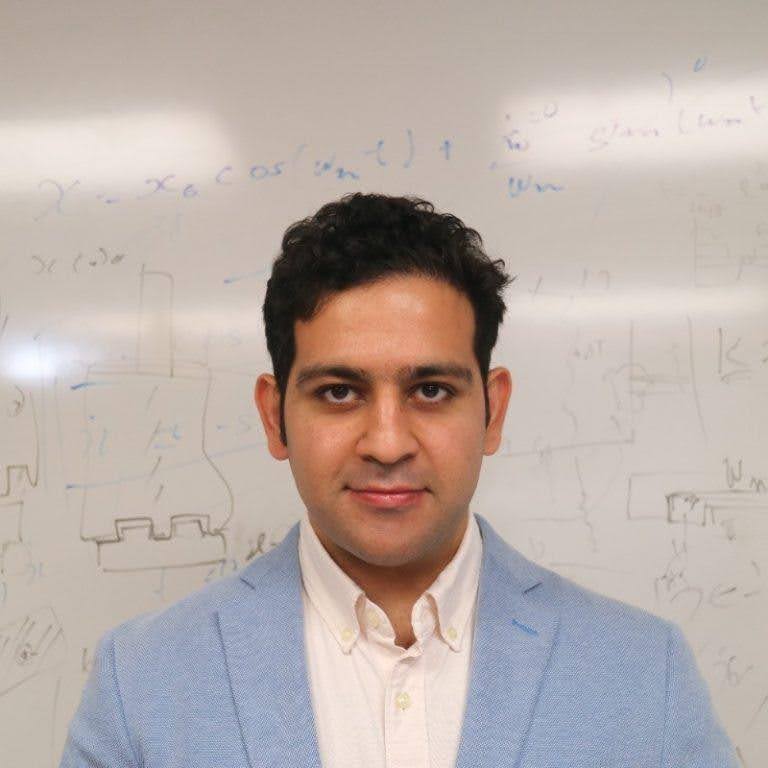How do top surgeons, researchers, and engineers collaborate to tackle one of the most challenging orthopedic cases? We sat down with Dr. Schwab MD, MS, the director of Spine Oncology for Orthopaedic Surgery and the Cedars-Sinai Center for Surgical Innovation and Engineering, Gage Olson is a Clinical Research Coordinator, and Marissa Hight is a Senior Medical Visualization Engineer at Axial3D, to explore how advanced 3D modeling transformed the planning process for a highly complex chondrosarcoma pelvic case—offering deeper insights, enhanced precision, and better patient outcomes.
Case Background
In August 2024, Dr. Schwab took on the care of a 41-year-old woman transferred to Cedars-Sinai from a community hospital with severe sepsis. The cause? A massive, low-grade chondrosarcoma that had been growing undetected in her pelvis for three years. Originating on the left side, the tumor had expanded outward, displacing the gluteal muscles, while also invading internally, pushing her organs into the right hemi-pelvis. Given the complexity and scale of the procedure ahead, Dr. Schwab worked closely with senior hospital administrators and a multidisciplinary team—including specialists from multiple surgical disciplines and the ICU—to meticulously plan for what would be an exceptionally challenging operation.
Process of Ordering a 3D Model
Gage from Cedars-Sinai uploaded the patient’s DICOM images to Axial3D’s cloud platform, INSIGHT. “Uploading images, regardless of type, is incredibly easy with INSIGHT. I simply request the full study from my institution, and the portal automatically identifies the relevant images for segmentation.”
Once uploaded, Axial3D’s AI-powered platform processes the images and generates 3D models. “Our AI algorithm analyzes the DICOM data, making initial predictions. We then refine the segmentation based on the customer’s specific needs,” explained Marissa Hight, Senior Medical Visualization Engineer at Axial3D. “Once approved, we prepare the model for printing, splitting it into sections with dowels and magnets to fit on the printer. For this case, we created 11 separate printed sections, each containing multiple anatomies.”
A key advantage of Axial3D’s segmentation process is its AI algorithm, which accurately predicts anatomical structures by analyzing intensity values. This allows precise identification of bones, vasculature, and even fractures. Dr. Schwab highlighted the importance of this precision: “Axial3D’s segmentation is both timely and highly accurate. When we need models on tight deadlines, their team has been instrumental in helping us deliver.
Data Security
Axial3D prioritizes patient privacy and data security by only receiving the patient’s year of birth and gender. All other identifying information is thoroughly removed before DICOM files are uploaded to the orders platform, ensuring complete data protection. Any additional details are safeguarded under strict client confidentiality agreements.
Once the segmented files were complete, Gage and the Cedar Sinai team received a high-quality, 3D print-ready STL assembly file. The user-friendly format allowed them to efficiently organize the files on the print tray to optimize printing time. Additionally, the STL assembly made it easy to apply color coding, enabling the surgeon to customize the model to meet specific surgical needs. Axial3D’s responsiveness throughout the process ensured the final model met all expectations for accuracy and usability.
Accuracy of the Model
Axial3D’s 3D model proved to be an invaluable tool for surgical planning, delivering exceptional accuracy and a seamless fit. Designed in 11 segmented pieces for printing, the model assembled flawlessly. “The model was incredibly precise and fit together perfectly, making it an excellent resource for surgical planning,” Gage noted.
This level of accuracy is the result of Axial3D’s rigorous quality control process, particularly for complex oncology cases. Marissa explained that each model undergoes multiple quality checks at every stage—initial segmentation is verified by a specialist, followed by reviews from two additional engineers. Before delivery, the 3D visualization is meticulously inspected, and the final mesh is compared against the original DICOM scans. Measurements are taken to ensure the model remains within 0.3mm of anatomical accuracy. Only after passing all these checks does it move to Quality Assurance for final approval.
This meticulous approach ensures that every model meets the highest standards of precision and reliability, giving surgeons the confidence they need for complex procedures.
3D Printing of the Model
The 3D model was printed onsite at CSIE using Stratasys J5 and FDM printers. While the team had extensive 3D printing experience, they relied on Axial3D’s expertise in segmentation to produce a high-resolution model. Due to its complexity, the model was divided into 11 pieces and took 81 hours to print, with an additional 15 hours dedicated to support removal, cleaning, and assembly. The intricate anatomy and the use of UltraClear material for the bones required extra post-processing—such as bleaching, sanding, and clear coating—to achieve the desired transparent finish.
How the Model was Used
The 3D model played a crucial role in surgical planning, resource allocation, and patient communication. It provided the multidisciplinary team with a clear understanding of the case’s severity and complexity, supporting discussions around ethics and guiding the surgical approach. The model’s detailed design, with each anatomical structure color-coded and free from unnecessary tissue, made the tumor boundaries exceptionally clear. As the team noted, “The model made the severity, urgency, and challenges of the case very clear to everyone involved, greatly aiding in the assessment of tumor boundaries.”
Value of the 3D Modeling in Surgical Planning
The 3D model was an invaluable tool for both the surgical team and the patient. At the Cedars-Sinai Simulation Center, it allowed nurses, surgical technicians, and physicians to familiarize themselves with the case, refine the surgical plan, and explore different approaches. “Having the model on-site allowed everyone to engage with the case, from initial planning to potential surgical strategies,” said Dr. Schwab.
Beyond planning, the model played a key role in patient positioning throughout the three-day operation and served as a reference in an ethics discussion involving the surgical team, the department chair, and a medical ethicist. For the patient, it provided a tangible way to understand her condition and set realistic expectations for recovery. Given the complexity of the case and a language barrier, it also ensured truly informed consent. “It allowed for the best-informed consent possible in a case like this,” Dr. Schwab noted.
In the operating room, the model’s accuracy and scale enabled the team to save valuable time by streamlining resource allocation. “By positioning the model in various ways, the team had a clear understanding of what resources and personnel we’d need and when,” Dr. Schwab explained.
Having a physical, patient-specific model to hold and examine from multiple angles is an immense advantage in surgical planning and execution. This is especially true for models that closely match the patient’s actual size, allowing for detailed anatomical assessment. The ability to visualize and manipulate the model enhances collaboration in multidisciplinary teams, where specialized surgeons may not be familiar with every aspect of the case. As one surgeon noted, “Being able to hold and evaluate the model from different perspectives is a huge asset, especially when working as a team.”
This collaboration between Cedars-Sinai and Axial3D underscores the impact of working with partners who share the same vision. As Gage put it, “This partnership has been invaluable, and it’s clear why we value it so highly.”
“The customer service from Axial3D has been superb. They are always helpful, incredibly passionate about their work, and genuinely curious about our work and the wellbeing of our patients.”
Introduction & Roles
Joseph H. Schwab, MD, MS, is the director of Spine Oncology for Orthopaedic Surgery and the Cedars-Sinai Center for Surgical Innovation and Engineering. He is a recognized leader in diagnosing and treating complex orthopaedic and spinal oncology conditions. Schwab has experience in translational research, clinical trials, and providing high-quality patient care. He is responsible for expanding the spine oncology program and promoting multidisciplinary surgery research under his leadership.
Gage Olson is a Clinical Research Coordinator. His role at CSIE involves managing interdisciplinary projects, design studies, building experimental setups and contributing to clinical practice by developing innovative solutions, such as high-resolution 3D models for complex surgical cases.

Marissa Hight is a Senior Medical Visualization Engineer at Axial3D. Based in the USA she leads the production of Axial3D’s models during US hours and handles some very complex cases. She is the Customer Success Engineer for Cedar Sinai and she holds a Masters in Modern Human Anatomy.

Dr. Karimi has a PhD in chemical engineering and focuses on bone quality and the electrochemical understanding of the human neuromuscular system. Dr. Karimi helped with the post-processing of this model.

Dr. Yazdkhasti’s research focuses on acoustic devices and wearables for quantifying functional exams and diagnosing neuromuscular disease. Dr. Yazdkhasti helped with the post-processing of this model.
There were numerous people on both sides who collaborated on this case. We’d like to thank everyone involved — and especially those listed above, who were key contributors to the printing and post-processing.



